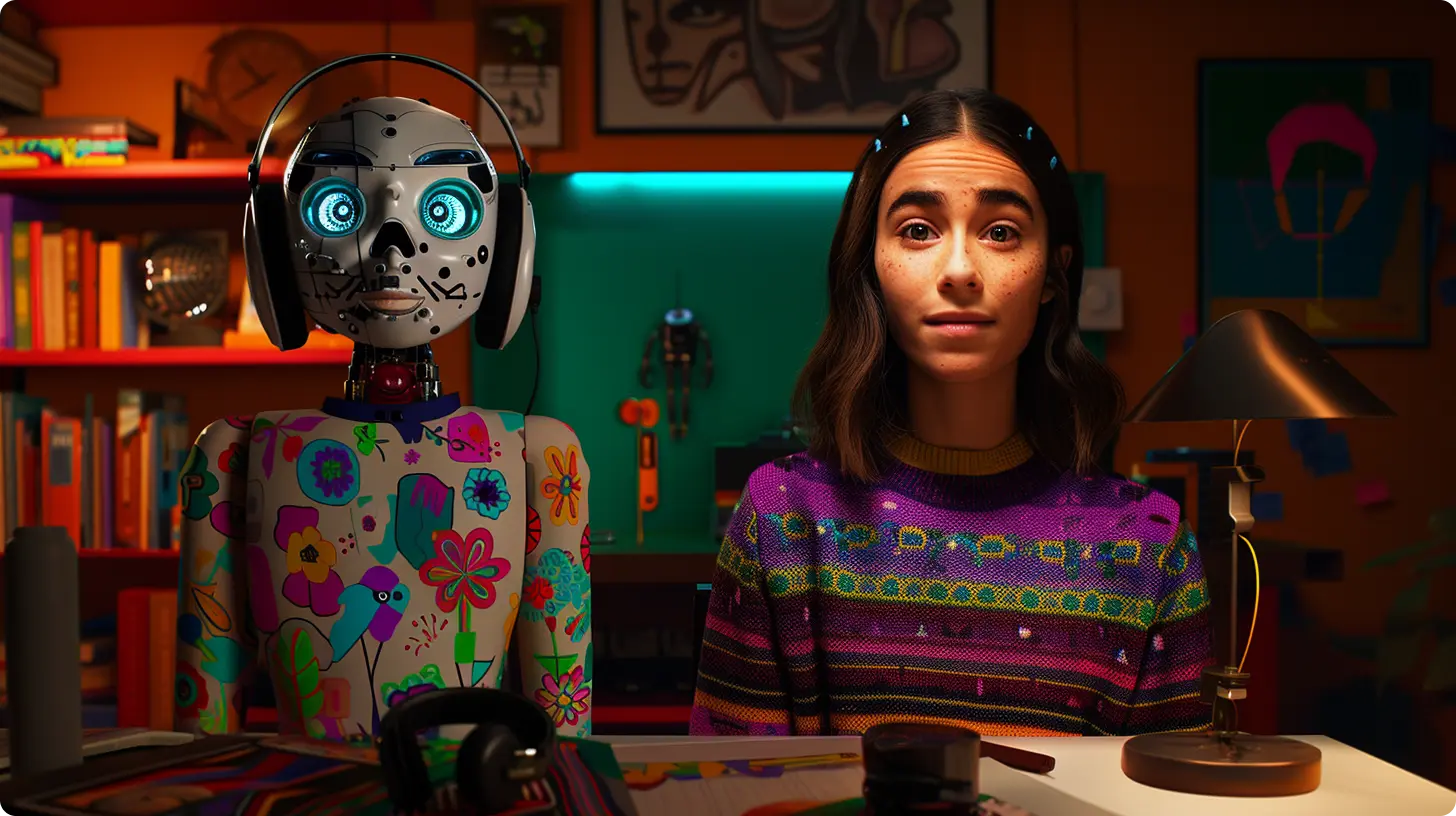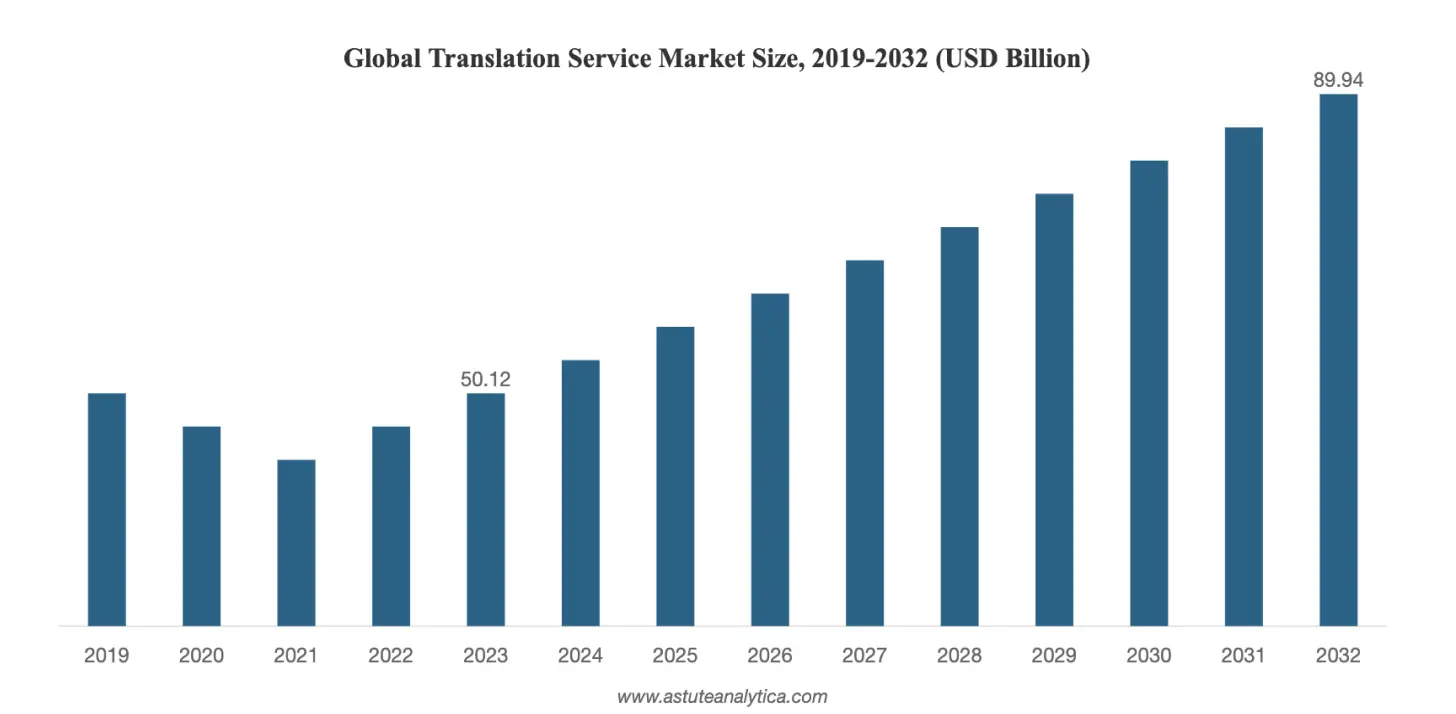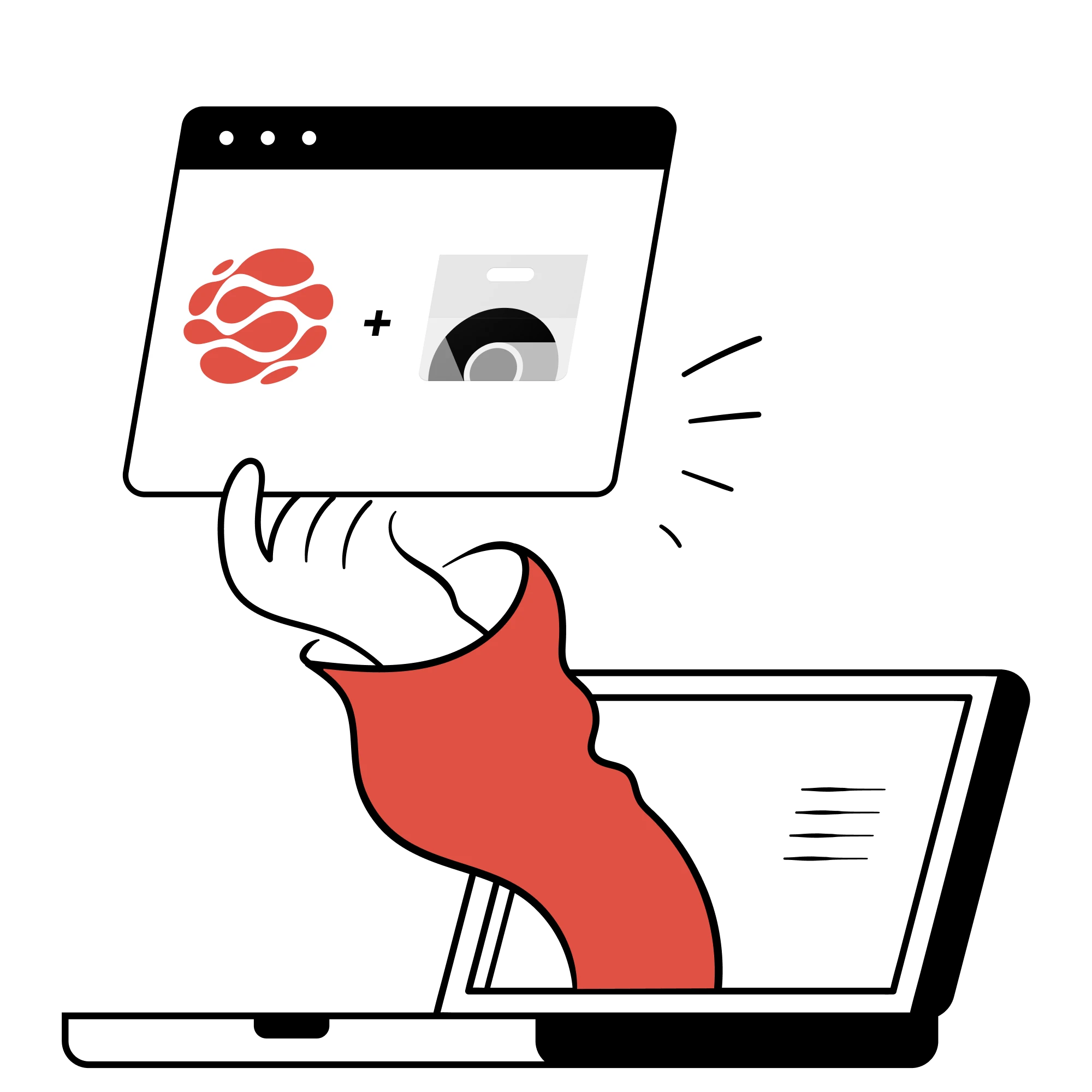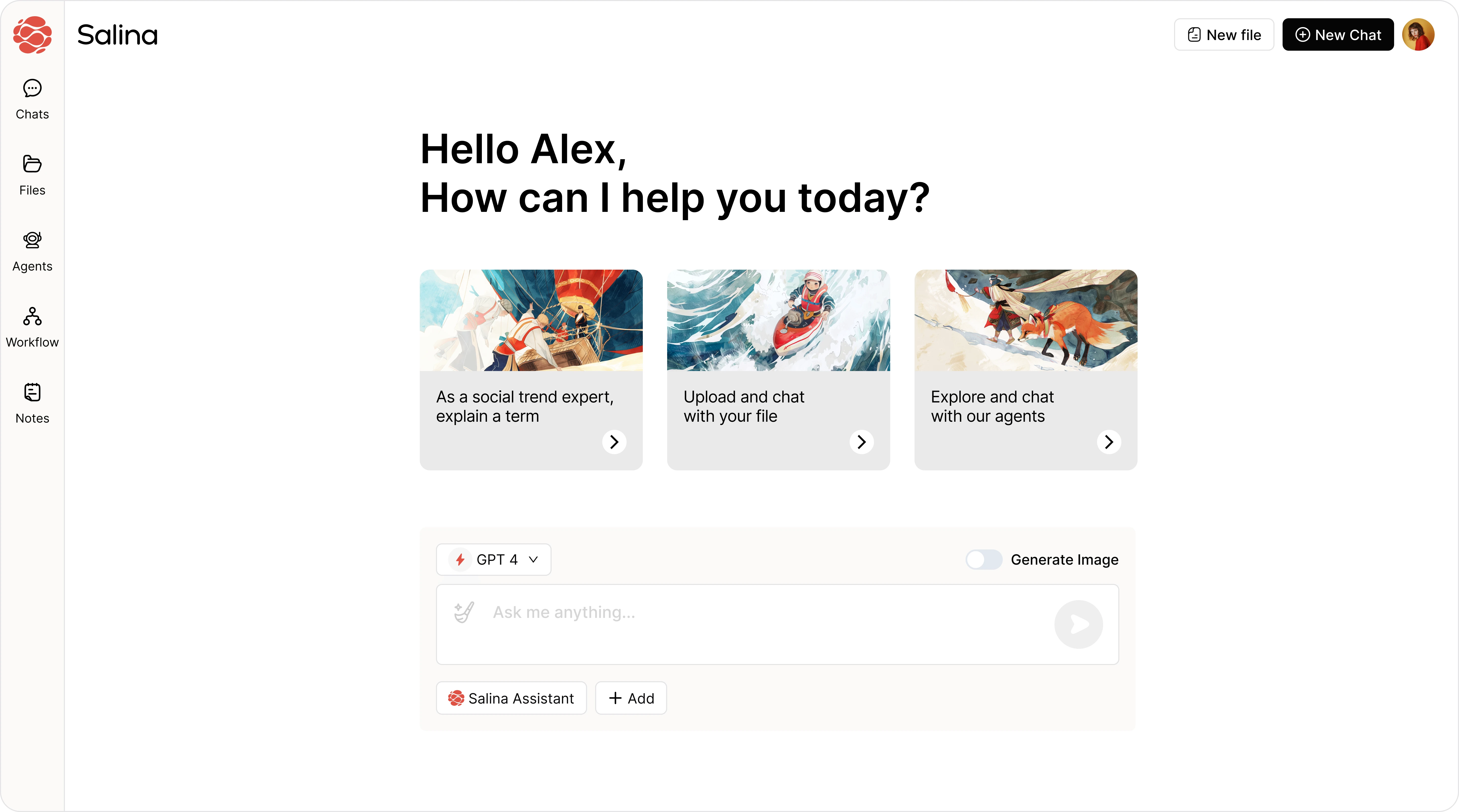
Is AI poised to replace human translators? Not quite. This blog explores the strengths of AI vs. human translation. We will explore AI translation (speed, efficiency) and human translators (accuracy, cultural understanding) and how they can work together to deliver the best possible translations.
Have you ever struggled to understand a menu in a foreign language, resorting to pointing at pictures and hoping for the best? Picture a world where language barriers vanish instantly, thanks to the power of artificial intelligence (AI). This isn’t just a fantasy! AI is swiftly changing the translation field, blurring the distinction between human skill and machine innovation.
I recently stumbled upon a Reddit thread that posed an intriguing question about the potential for AI to completely replace human translators. This question truly made me wonder and prompted me to delve deeper.
So let’s examine how translation services currently operate. How are humans and machines handling this long-standing challenge, and what lies ahead for both? Join me as we analyze the strengths and weaknesses of AI translation, comparing it to the unique capabilities of human translators.
The Translation Industry Today
The scope of translation services today is as diverse as the languages themselves. Hello, Hola, Bonjour – from chatbots to literature, legal documents to live interpretation, the translation industry serves a myriad of purposes. The scale of this industry can be gauged by the demand, which is surging in sectors such as e-commerce, entertainment, and international diplomacy.

The graph illustrates the global market for translation services, indicating a value of $5.12 billion in 2023. Projections anticipate a substantial growth to reach $89.94 billion by 2032. This growth is anticipated to occur at an annual growth rate of 6.7% between 2024 and 2032, indicating a significant expansion in the industry’s value over the forecast period.
High-volume demand and industry response
Given the extensive scale of this market, human translation alone would not be adequate. Consider the colossal task of localizing an international e-commerce platform, ensuring both linguistic and cultural adaptations across multiple platforms and touchpoints. The need for rapid and scalable translation solutions is quite apparent.
The technology that supports it
AI is now a strong ally, boosting translation efficiency. Combining Machine Learning with Neural Machine Translation (NMT) has notably improved translation accuracy and fluency to meet the increasing demand in the field.
NMT uses deep learning algorithms to analyze and translate sentences at a more human-like level, significantly reducing the time needed for post-editing. Additionally, AI translation tools can handle multiple languages simultaneously, providing a higher level of efficiency and cost-effectiveness.
For those new to machine learning and NMT, I recommend watching the video below to gain a deeper understanding of the concepts.
Despite technological advancements, the translation industry faces several noteworthy challenges. These include preserving the integrity of the translated content, ensuring privacy and security, and navigating the complexities of global compliance. The main edict here is that human oversight will still continue to be employed in some sort of way and we’ll explore more of why through a more detailed comparison later on.
AI in Language Translation: Capabilities and Growth
AI’s role in language translation is fascinating and groundbreaking. It has evolved from simple text translations to understanding nuances, idioms, and cultural contexts. This progress was driven by advancements in Natural Language Processing (NLP) and Machine Learning, enabling AI to learn from vast data sets and improve continuously.
AI excels in speed and scalability in translation, processing documents much faster than human translators. This makes it invaluable for businesses needing quick results.
Another strength of AI is its consistency and memory. Once it learns a term, it can maintain terminology consistency across projects, crucial in fields like law and technology.
Given the strengths of AI, the current query revolves around its potential to fully replace human translators. Take a look at these interesting Reddit thread discussing this and consider different viewpoints to shape your own opinion on the topic.
Despite AI’s strengths, in our point of view challenges still arise in translating literary works or emotionally nuanced content. This emphasizes the irreplaceable role of human translators in quality and culturally sensitive translations.
In summary, AI’s growth in language translation enhances the process but underscores the irreplaceable value of human touch in certain aspects of translation.
The Indispensable Human Touch: Human Translators’ Enduring Value
Translation is rich with idiosyncrasies, nuances, and layers of cultural meaning that reflect the essence of humanity. This intricate domain is where today’s AI faces challenges in keeping up.

 www.linkedin.com
www.linkedin.comThe LinkedIn post above highlights the unique abilities of human translators who possess a profound understanding of context and culture. This enables them to skillfully navigate the intricacies of idioms and tone, guiding translations toward nuanced comprehension rather than literal misinterpretations.
The contribution of human translators extends beyond the mere efficiency gains of AI. It involves ensuring accuracy, maintaining tone, and adhering to industry-specific terminology and standards. Whether it’s creative writing or legal documents, certain types of content require the emotional and intellectual expertise that only a human touch can provide.
The Complex Relationship Between AI and Human Translators
Despite the common belief that AI and human translators are at odds, they are actually finding innovative ways to collaborate effectively. The debate on machine translation intensifies in professional settings where errors can have significant impacts on the accuracy and quality of the final output.
Hesitating to fully replace translation with AI is reasonable. Human intuition, cultural nuances, and creativity are pivotal in contexts demanding a profound comprehension beyond literal translation. These include linguistic challenges, creative subtleties, and strategic decision-making processes.
However, there’s an observable and promising trend indicating how AI complements and enhances human work in the translation field by automating repetitive tasks and allowing translators to dedicate more time to complex linguistic nuances. Why don’t we go through the comparative analysis of the two to understand this complex relationship even further?
Comparative Analysis: AI vs. Human Translation
| CATEGORY | AI TRANSLATION | HUMAN TRANSLATION |
|---|---|---|
| Accuracy | High accuracy within context-agnostic, general-domain translations. | Superior accuracy in understanding and conveying context-specific, specialized content. |
| Speed | Instantaneous translation for a single piece of text. | Variable timelines, subject to translator availability and complexity of the material. |
| Cost | Significantly reduced costs for high-volume, repetitive translations. | Higher associated costs reflect the expertise and time required for specialized and nuanced content. |
| Cultural Sensitivity | Blindsided by context-specific socio-cultural phenomena. | Innately aware of cultural implications and connotations in language usage. |
| Scalability | Highly scalable for pipelines with growing translation demands. | Resource-intensive at scale, but offers irreplaceable value in complex translations. |
The comparison between AI and human translation does not necessarily advocate for one over the other but rather highlights the complementary nature of both. While AI excels in speed and efficiency, human translation brings nuances, cultural context, and emotional intelligence to the table, creating a harmonious blend of capabilities in the world of language translation.
AI and Human Translation in Action
Integration at Wayfair
E-commerce giant Wayfair’s translation workflows exhibit the trade-off between translation speed and costs through elastic AI-human cooperation.
The integration of AI and human efforts in their translation workflows demonstrates a balance between speed and cost. This “elastic” approach allows for scalable translation processes, adapting to varying demands and resources.
By utilizing AI for initial translations and human expertise for nuanced adjustments, Wayfair efficiently manages its e-commerce content across different markets, optimizing both the speed of translation and the associated costs.
Pathways to Collaboration
The future seems to lean towards a fusion of AI and human translation. In this scenario, AI takes on repetitive tasks and large volumes, while human translators enhance and polish the content. Strategies for effectively integrating AI into translation pipelines require recognizing AI’s limitations and utilizing human insight to complement its strengths.
As AI becomes integrated with human expertise, the translation industry faces the need to adjust and get ready for the impending changes AI will introduce. Future translators will benefit from training in AI-assisted translation techniques and acquiring domain-specific knowledge and skills.
Navigating AI Translation Tools
AI Audio Translation
Rask.ai
Offers an innovative AI audio translator tool that supports seamless translation across more than 130 languages, featuring accurate voice recognition and the ability to mimic the original voice for a more natural listening experience, making it ideal for overcoming global communication barriers.
AI Video and Video Translation
Wavel.ai
An advanced AI video translation tool speeds up video dubbing in over 20 languages with 250+ high-quality voices. It makes video localization 5x more cost-effective and efficient, enabling wider global reach without sacrificing voice quality. Ideal for content creators scaling rapidly across diverse linguistic landscapes.
VEED.io
Provides an AI solution for translating videos into 125+ languages, with auto-generated subtitles and AI voice dubbing. Ensures accuracy and allows easy contextual edits for translations. VEED.io simplifies global content access, replacing expensive translation agencies and manual subtitle input. Designed to engage diverse audiences in their language, boosting video impact across languages.
AI Text Translation
DeepL
Renowned for using AI to deliver text translations with a focus on accuracy, fluency, and understanding of complex nuances and idiomatic expressions across a wide range of languages. It is known for its superior quality in translations, often surpassing other translation tools by capturing the subtle meanings and tones of the source text, making it highly valued for professional and personal use where precision is key.
All in One
SmartCat
An all-in-one translation platform that combines AI-powered technology with project management and collaboration tools. It facilitates a broad spectrum of translation needs including document translation, website localization, and software localization. This versatile tool streamlines every step of the translation process, serving freelancers, agencies, and corporate clients with a comprehensive solution for their multilingual projects.
Key Takeaways
- AI translation excels in speed, efficiency, and scalability, making it ideal for high-volume, repetitive tasks.
- Human translators offer unparalleled accuracy, cultural sensitivity, and understanding of nuanced content that AI cannot match.
- Integrating AI and human expertise in translation workflows, like at Wayfair, optimizes cost, speed, and quality.
- The future of translation involves collaborative AI-human approaches, with AI handling most tasks and humans focusing on refinement.
- Training in AI-assisted translation and domain-specific knowledge is crucial for professional translators to stay relevant.
What’s Next
The relationship between AI and human translators is not a zero-sum game; it’s one of mutual elevation. The path forward encourages a collaborative spirit, one that fosters a combined strength to tackle the demands and nuances of our multilingual world.
Whether it’s crafting the perfect ad to resonate with an international audience or translating a critical document with unerring precision, the future holds a poignant promise—a harmonious symphony of AI and human expertise, playing to the rhythms of our global society.





